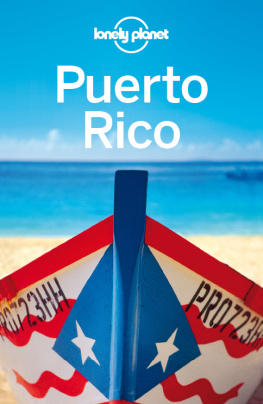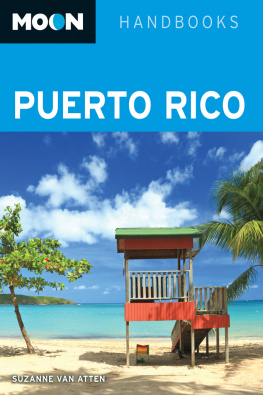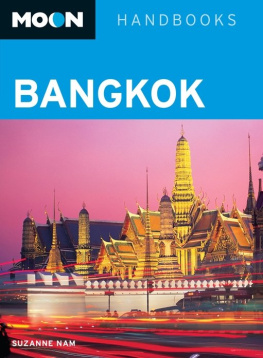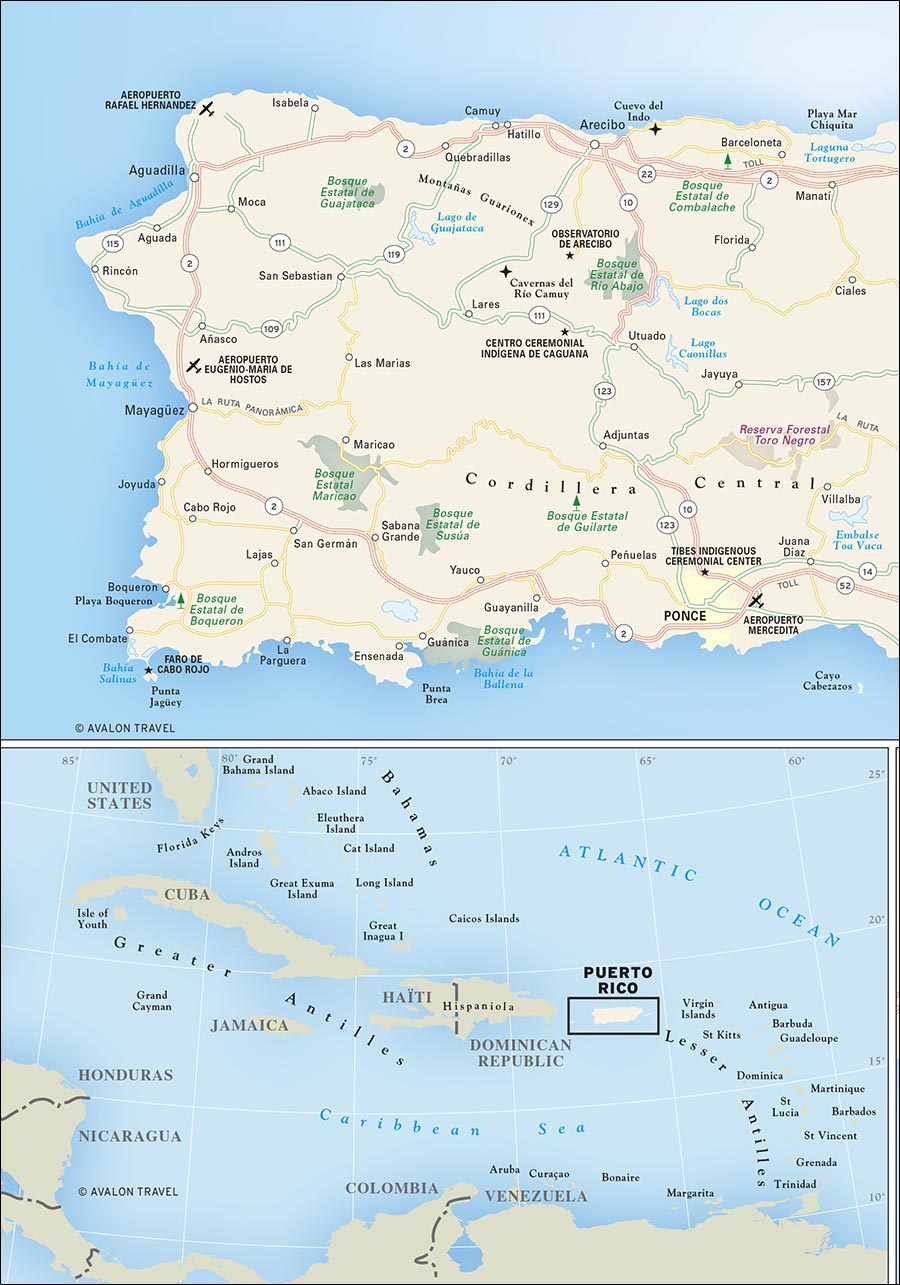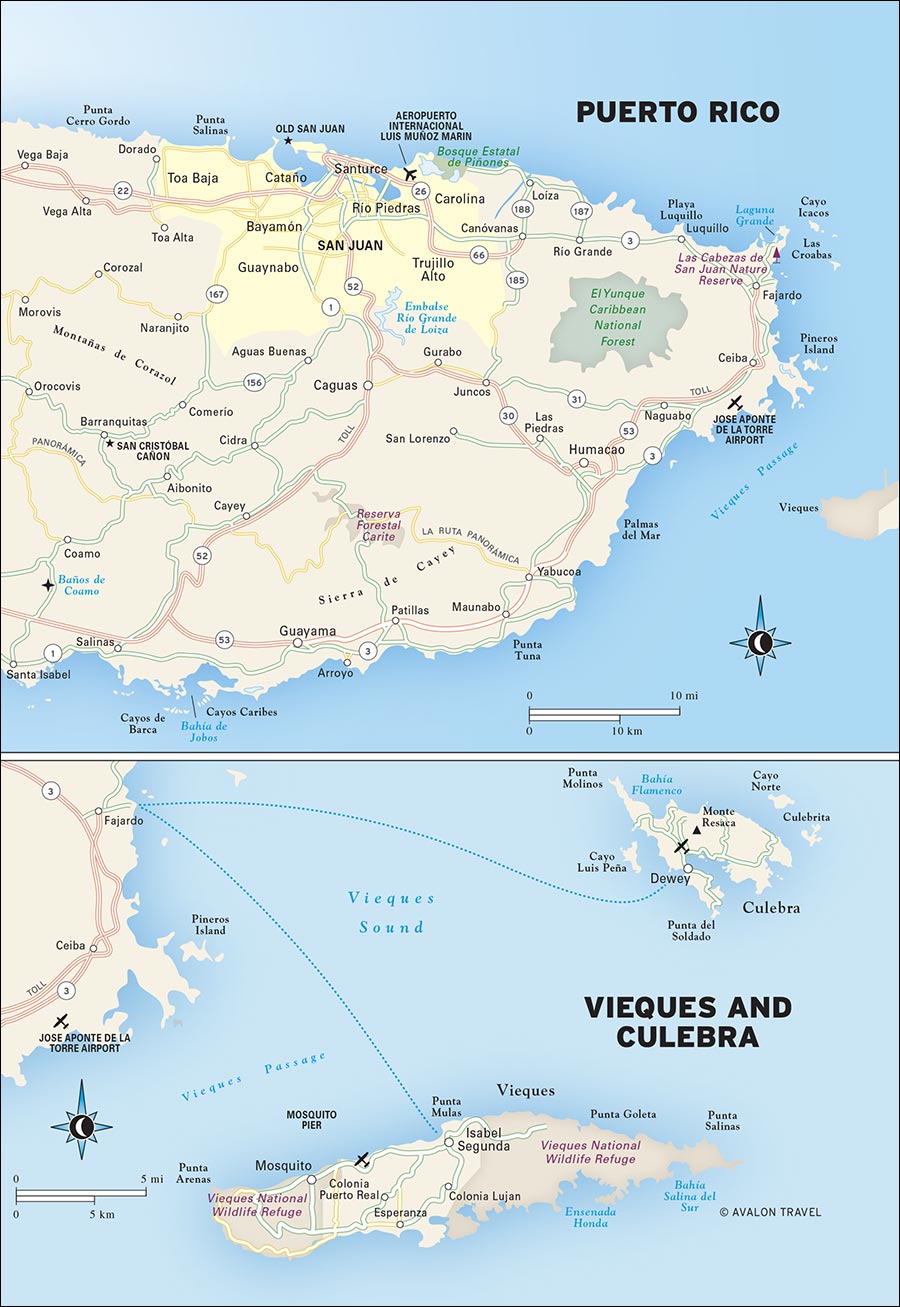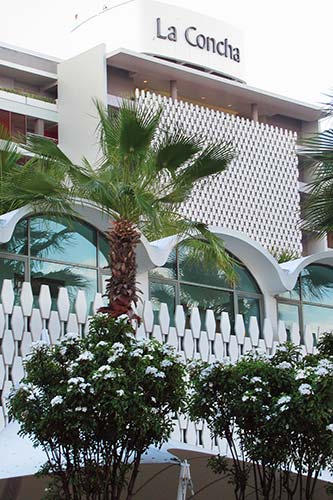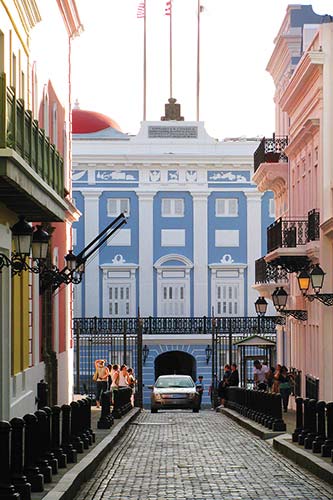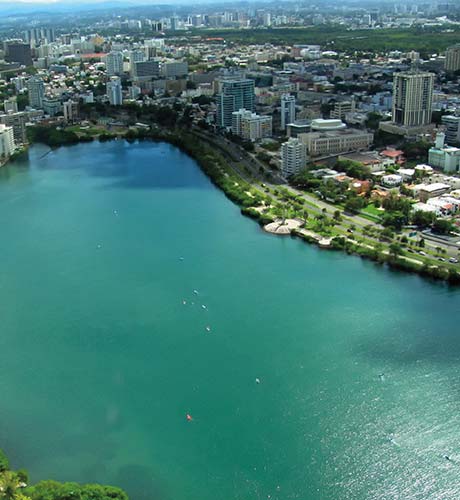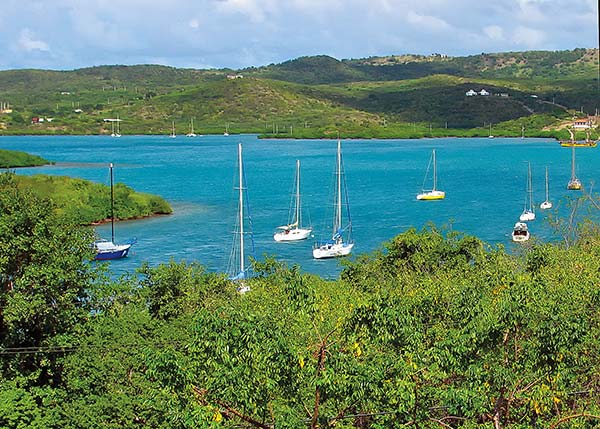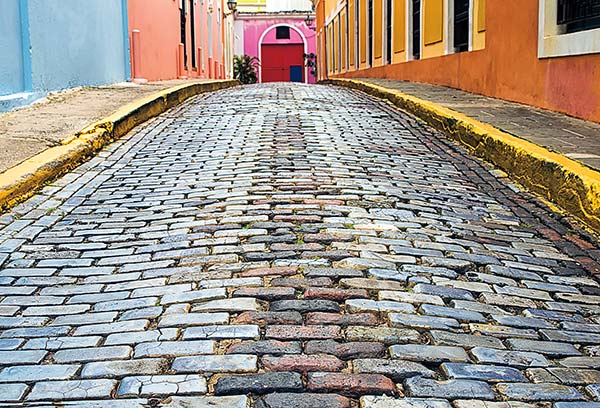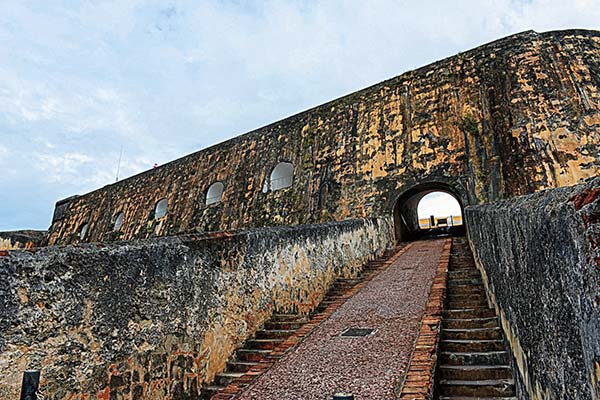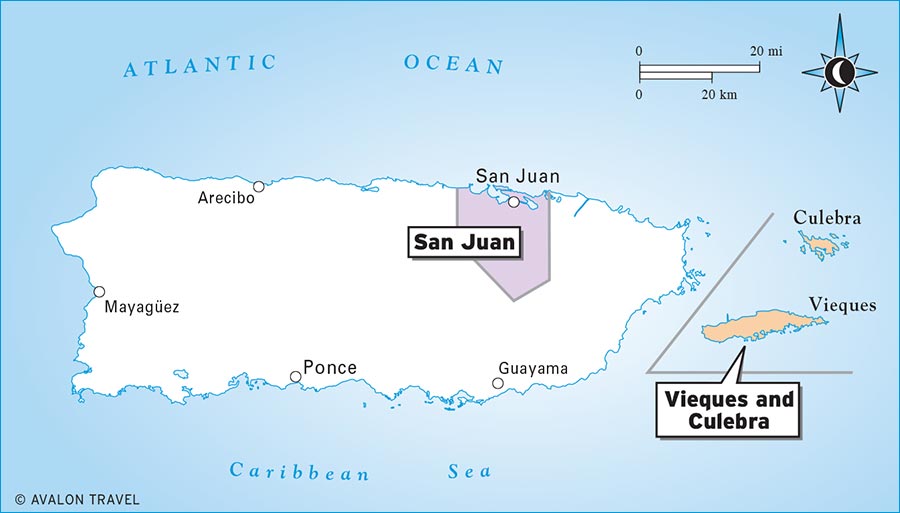
SAN JUAN, VIEQUES & CULEBRA
SUZANNE VAN ATTEN
Like any major metropolitan city, San Juan is many things to many people. To historians it is blue cobblestone streets and 17th-century fortresses that harken back to the birth of Spanish colonialism. To foodies it is the taste of celebrity chefs pushing the boundaries of Caribbean cuisine and mom-and-pop restaurants that are preserving the traditional flavors of criolla cocina (Puerto Rican cuisine). To culture buffs it is world-class museums and heritage festivals. To the party crowd, it is enjoying the glitzy casinos, rooftop lounges, cozy bars, and frenetic nightclubs thumping with the beat of salsa, techno, or reggaetn. To outdoor enthusiasts, it is thrill-a-minute action spent swimming, sailing, surfing, snorkeling, paddleboarding, horseback riding, ziplining, and deep-sea fishing. And to sun worshippers it is wide sandy beaches, shady palm trees, tropical breezes, and a cooling dip in the surf.
But if your idea of an island getaway doesnt involve glitz and glam or some of the attendant woes of city life, like traffic and crowds, then the solution is a short plane or ferry ride away. Vieques and Culebra are the antithesis of San Juan. Located off the east coast of the main island and accessible by plane or ferry, they are sometimes referred to as the Spanish Virgin Islands or the way Puerto Rico used to be. Sleepy, rustic, and predominantly undeveloped, they boast miles of deserted beaches, diving and fishing spots galore, and a low-key ambiance designed for rest and relaxation.
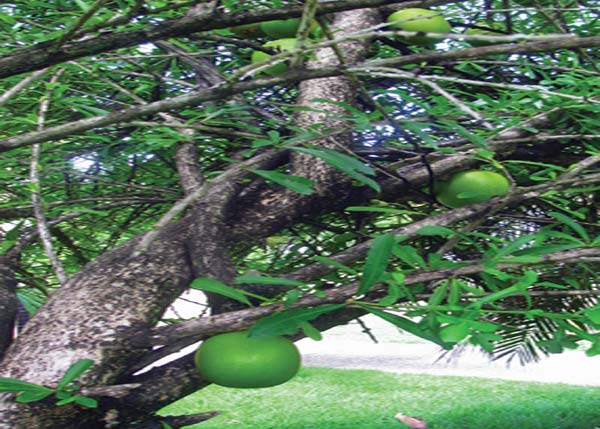
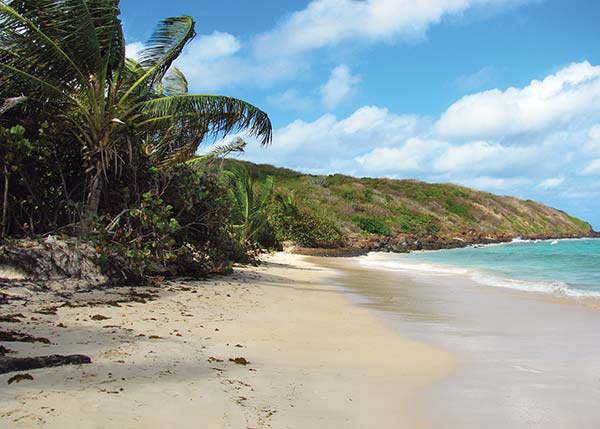
boats dock in Culebra
Vieques is the largest of the islets and the most populated. Aside from the free-range horses that roam the place, its biggest claim to fame is Mosquito Bay, Puerto Ricos most dramatic bioluminescent lagoon. Culebra is smaller and even sleepier than Vieques, and it is famous for having one of the most magnificent beaches in the CaribbeanPlaya Flamenco, a mile-long crescent where the water is clear as glass and the sand is blindingly white.
Between San Juan, Vieques, and Culebra, it is possible to experience everything Puerto Rico has to offer, from the sophisticated to the sublime.
cobblestone street in Old San Juan
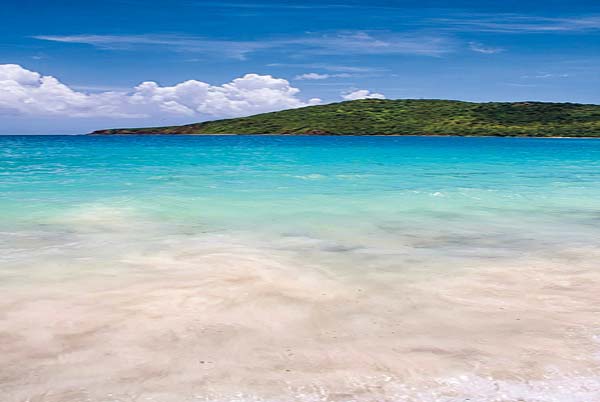
the eastern shore of Culebra, across from Playa Flamenco.
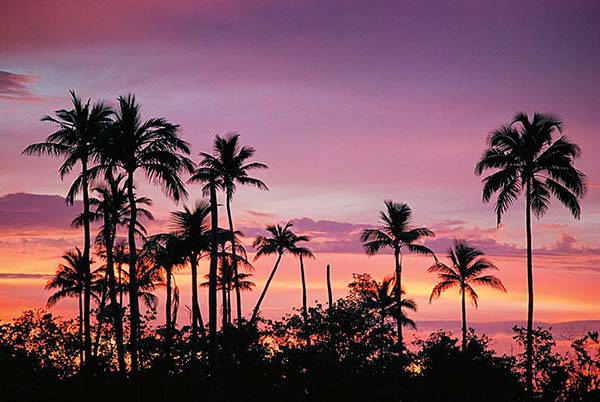
sunset in Vieques
Where to Go
San Juan
Situated on the northeast coast, sophisticated, fast-paced San Juan is Puerto Ricos capital and largest city. Its heart is Old San Juan, the original walled city founded by Spanish settlers in 1521, home to two fortresses: Castillo San Felipe del Morro and Castillo de San Cristbal. Other significant neighborhoods include Isla Verde, with the citys best beaches and most exclusive hotels, and Condado, considered the tourist district, where youll find high-rise hotels, high-end shops, and casinos. In nearby Santurce is a burgeoning arts district, home to galleries, studios, and Museo de Arte de Puerto Rico.
Castillo San Felipe del Morro
Land-and-air vacation packages are available at resorts and hotels in Condado and Isla Verde. Because the island is only 111 miles by 36 miles, you can take a day trip to anywhere in Puerto Rico from San Juan; popular ones include El Yunque Caribbean National Forest in Ro Grande, the beach and kioskos in Luquillo, and the colonial city of Ponce.
Vieques and Culebra
Vieques and Culebra are two small islands off the main islands east coast. Both offer some of the best wilderness beaches to be found in Puerto Ricoif not the entire Caribbean. Balneario Sun Bay in Vieques is a mile-long sandy crescent on crystal-blue waters. Playa Flamenco on Culebra is considered one of the best beaches in the United States. Both islands are renowned for their spectacular diving and snorkeling. Vieques is also the site of Mosquito Bay, Puerto Ricos most outstanding bioluminescent bay, where the water glows an electric blue at night. If you need a history fix, Vieques is home to El Fortn Conde de Mirasol, the last fort built by colonial Spain, which now holds the Vieques Museum of Art and History.
When to Go
The climate in Puerto Rico is classified as tropical marine, which means it is sunny, hot, and humid year-round. The average year-round temperature ranges from 80F on the coast to 68F in the mountains.
Puerto Rico has two seasons. Dry season is January-April. This is when humidity is the lowest, and temperatures hit an average high of 84F and an average low of 71F. It should be noted that rain does occur during dry season, but at a much lower rate than in summer and fall. Airline tickets and hotel room rates tend to be higher during dry season. From December through the end of dry season is high season for the tourist industry throughout much of the island, including San Juan and Vieques.



